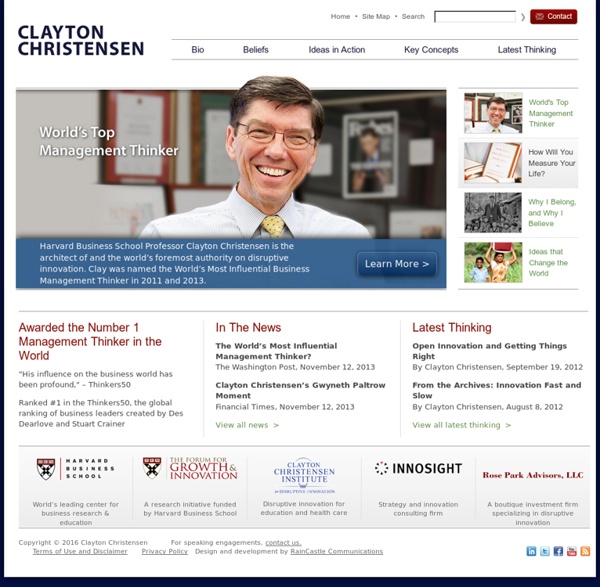



Disruptive technology Sustaining innovations are typically innovations in technology, whereas disruptive innovations cause changes to markets. For example, the automobile was a revolutionary technological innovation, but it was not a disruptive innovation, because early automobiles were expensive luxury items that did not disrupt the market for horse-drawn vehicles. The market for transportation essentially remained intact until the debut of the lower priced Ford Model T in 1908. The mass-produced automobile was a disruptive innovation, because it changed the transportation market. The automobile, by itself, was not. The current theoretical understanding of disruptive innovation is different from what might be expected by default, an idea that Clayton M. The work of Christensen and others during the 2000s has addressed the question of what firms can do to avoid displacement brought on by technological disruption. History and usage of the term[edit] The term disruptive technologies was coined by Clayton M.
Moore's law Moore's law is the observation that, over the history of computing hardware, the number of transistors on integrated circuits doubles approximately every two years. The law is named after Intel co-founder Gordon E. Moore, who described the trend in his 1965 paper.[1][2][3] His prediction has proven to be accurate, in part because the law is now used in the semiconductor industry to guide long-term planning and to set targets for research and development.[4] The capabilities of many digital electronic devices are strongly linked to Moore's law: processing speed, memory capacity, sensors and even the number and size of pixels in digital cameras.[5] All of these are improving at roughly exponential rates as well. The period is often quoted as 18 months because of Intel executive David House, who predicted that chip performance would double every 18 months (being a combination of the effect of more transistors and their being faster).[9] History[edit] Gordon Moore in 2004 Network capacity.
Network effect Diagram showing the network effect in a few simple phone networks. The lines represent potential calls between phones. The classic example is the telephone. The expression "network effect" is applied most commonly to positive network externalities as in the case of the telephone. Over time, positive network effects can create a bandwagon effect as the network becomes more valuable and more people join, in a positive feedback loop. Origins[edit] Network effects were a central theme in the arguments of Theodore Vail, the first post patent president of Bell Telephone, in gaining a monopoly on US telephone services. The economic theory of the network effect was advanced significantly between 1985 and 1995 by researchers Michael L. According to Metcalfe, the rationale behind the sale of networking cards was that (1) the cost of the network was directly proportional to the number of cards installed, but (2) the value of the network was proportional to the square of the number of users.
Geoffrey Moore - Dealing With Darwin National University National University Online Library Membership The National University Online Library is a unique and valuable resource for alumni, and includes one of the largest collections of electronic books in the nation. As a student, you had access to a great collection of print and online resources through the National University Library System, including NetLibrary, EBSCO and onsite library resources. Join the Alumni Online Library and you can continue to have access to the following key resources and services: Borrowing books (free delivery outside of the San Diego area).Using online journals with the alumni version of Academic Search Premier (EBSCO).Having access to the NetLibrary e-book collection.